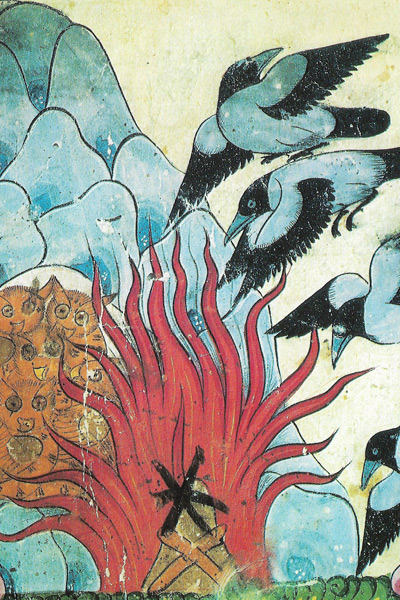Library
- View by difficulty
- View by series

saṃjayalokaḥ
Sanjaya loves to play with his family. He loves to explore and find secrets. And he especially loves to make new friends. Some of his friends aren't even human!
These simple, lighthearted, and whimsical stories about the people and animals in a small village require little to no cultural context and are appropriate for all ages.

rāmāyaṇam
The Ramayana tells the story of Rama: his divine birth, his exile to the forest, and his journey to save his wife Sita from the mighty demon king of Lanka. Our retelling of one of the foundational works of Indian literature simplifies the language of the original while preserving its core narrative.
Our first three books introduce the Ramayana's characters, setting, and basic plot. Then, we simply tell the story from start to finish. By the end, you'll understand why readers the world over have fallen in love with this enchanting tale.
We are currently about 20% through the story. Please subscribe to our mailing list or Twitter account for updates.

bhagavadgītā
A horrific war is about to begin. As Arjuna surveys the battlefield and sees his friends and kinsmen on both sides, he loses the will to fight and collapses. So begins the Bhagavad Gita, one of the most profound conversations in Sanskrit literature and one of the most important works in Hindu thought.
We present the Gita at four levels of difficulty, so that you can choose the level that's right for you. Level 1 is great for beginners, and Level 4 contains the original verses.

buddhaḥ
Disturbed by the transience of worldly life, the prince of Kapilavastu abandoned his kingdom in search of a solution to human suffering. Today, we know him as the Buddha.
Our series retells the Buddhacarita, the oldest full biography of the Buddha. It also contains some adapted Jataka stories and parts of the Diamond Sutra.

kathāḥ
Stories from Sanskrit's rich traditions of folklore. These fables about the wise conduct of everyday life — and the perils of foolish living — have delighted and protected their readers for millennia.
Our series adapts stories from several traditional works, including the Panchatantra, the Hitopadesha, and the Kathasaritsagara.

śikṣā
Traditional Sanskrit education starts with phonetics, the study of speech sounds and how to pronounce them. The books in this series introduce and describe the various Sanskrit sounds in traditional terms.
Due to their technical content, these books may be difficult to understand. We recommend them only to readers who are very interested in Sanskrit phonetics and grammar.